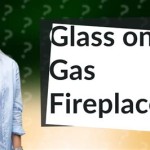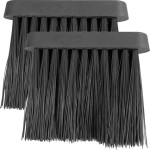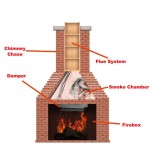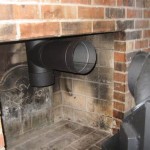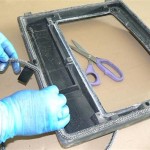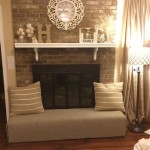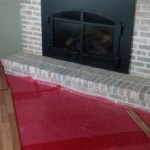Gas Fireplace Pipe Replacement: A Comprehensive Guide
Gas fireplaces offer convenience and warmth, but like any gas appliance, they require proper maintenance and occasional repairs to ensure safe and efficient operation. A critical component of a gas fireplace is its piping system, which delivers the natural gas or propane that fuels the fire. Over time, these pipes can deteriorate, leading to potential leaks and safety hazards. This article provides a comprehensive overview of gas fireplace pipe replacement, covering when it's necessary, the types of pipes involved, the replacement process, safety considerations, and relevant regulations.
The piping system in a gas fireplace doesn't just include the visible pipe leading into the unit. It's a network of connections that directs gas from the main supply line to the burner. This includes fittings, connectors, and sometimes, flexible gas lines designed to withstand the particular stresses associated with the fireplace environment. Understanding the purpose and condition of each component is vital when assessing the need for replacement.
When is Gas Fireplace Pipe Replacement Necessary?
Several factors can indicate the need for gas fireplace pipe replacement. Regular inspections are crucial to identify potential problems before they escalate into serious safety concerns. Some common indicators include:
1. Visible Corrosion or Rust: Surface rust may not always indicate a serious problem, but significant corrosion, particularly pitting or flaking, weakens the pipe's structural integrity. This can lead to leaks and necessitates replacement. The environment surrounding the fireplace, especially moisture levels, can accelerate corrosion.
2. Gas Leaks: The most obvious sign of a problem is the presence of a gas leak. This can be detected by a distinct sulfur-like odor, often described as rotten eggs. Gas leak detectors are readily available and can provide an early warning. If a leak is suspected, immediately turn off the gas supply to the fireplace and contact a qualified professional.
3. Damaged Fittings or Connectors: Fittings and connectors are susceptible to wear and tear, especially if they are repeatedly tightened or loosened. Look for cracks, loose connections, or evidence of gas leaks around these areas. Even slight damage can compromise the seal and lead to a potentially dangerous situation.
4. Old or Outdated Piping: Older gas fireplaces may have piping materials that are no longer compliant with current safety standards. If the fireplace is older than 20 years or if the piping material is unknown, it is prudent to have it inspected and potentially replaced to ensure compliance with modern codes.
5. Physical Damage: Accidental impact or physical damage to the piping can create weak points and increase the risk of leaks. Construction work or even moving furniture near the fireplace can inadvertently damage the gas lines. Visually inspect the piping after any such activity.
If any of these signs are present, it is essential to contact a qualified gas technician or plumber to assess the situation and recommend the appropriate course of action. Ignoring potential problems can lead to serious consequences, including fire or explosion.
Types of Gas Fireplace Piping
Different types of piping are used in gas fireplace installations, each with its own characteristics and suitability for specific applications. Understanding these differences is essential when considering replacement options.
1. Black Iron Pipe: Black iron pipe is a common choice for gas lines due to its durability and resistance to corrosion. It is typically used for rigid gas lines that run from the main supply to the fireplace. Black iron pipe requires threading and the use of pipe dope or Teflon tape to create a gas-tight seal.
2. Galvanized Steel Pipe: Galvanized steel pipe is similar to black iron pipe but has a zinc coating to provide additional corrosion protection. While it can be used for gas lines, it is less common than black iron pipe due to concerns that the zinc coating can flake off over time and clog gas valves.
3. Copper Tubing: Copper tubing is sometimes used for gas lines, particularly in older installations. However, it is less common in modern installations due to its higher cost and the potential for corrosion in certain environments. If copper tubing is used, it must be properly sized and installed with appropriate fittings.
4. Corrugated Stainless Steel Tubing (CSST): CSST is a flexible gas piping option that is becoming increasingly popular. It is made of stainless steel with a corrugated design that allows it to bend and flex easily. CSST is easier to install than rigid piping and can be run through walls and floors without the need for multiple fittings. However, CSST is susceptible to damage from lightning strikes and requires proper grounding protection.
5. Flexible Gas Connectors: Flexible gas connectors are short, flexible lengths of tubing used to connect the gas supply to the fireplace. These connectors are typically made of stainless steel and are designed to withstand the heat and vibrations of the fireplace. They are essential for allowing some movement and vibration without damaging the rigid piping.
The choice of piping material depends on several factors, including local building codes, the gas pressure, the distance from the gas supply, and the specific requirements of the fireplace. A qualified gas technician can help determine the best piping material for a particular installation.
The Gas Fireplace Pipe Replacement Process
Gas fireplace pipe replacement is a complex and potentially dangerous task that should only be performed by a qualified gas technician or plumber. The process typically involves the following steps:
1. Inspection and Assessment: The technician will inspect the existing piping system to identify the source of the problem and determine the extent of the damage. This may involve a visual inspection, gas leak test, and pressure test. The technician will also assess the condition of the fireplace itself to ensure that it is safe to operate after the piping is replaced.
2. Gas Shut-Off: The first step in the replacement process is to shut off the gas supply to the fireplace. This is typically done at the main gas meter or at a shut-off valve located near the fireplace. The technician will use a gas detector to ensure that there is no residual gas in the piping before proceeding.
3. Removal of Old Piping: The technician will carefully disconnect and remove the old piping. This may involve cutting the pipes, unscrewing fittings, and removing connectors. The technician will take care to avoid damaging the fireplace or surrounding structures.
4. Installation of New Piping: The technician will install the new piping, using the appropriate materials and techniques. This may involve threading pipes, applying pipe dope or Teflon tape, and tightening fittings. The technician will ensure that all connections are gas-tight and that the piping is properly supported.
5. Pressure Testing: After the new piping is installed, the technician will perform a pressure test to verify that there are no leaks. This involves pressurizing the piping system with air or gas and monitoring the pressure gauge for any drop. If a leak is detected, the technician will locate and repair it before proceeding.
6. Gas Reconnection and Testing: Once the pressure test is complete, the technician will reconnect the gas supply to the fireplace and test the appliance to ensure that it is operating safely and efficiently. This may involve adjusting the gas pressure, checking the burner flame, and verifying that the safety controls are functioning properly.
7. Carbon Monoxide Testing: The final step is to perform a carbon monoxide test to ensure that the fireplace is not producing excessive levels of carbon monoxide. Carbon monoxide is a colorless, odorless gas that can be deadly. The technician will use a carbon monoxide detector to measure the carbon monoxide levels in the surrounding area and make any necessary adjustments to the fireplace.
Throughout the entire process, safety is paramount. The technician will wear appropriate safety gear, such as gloves and eye protection, and will follow all safety procedures to prevent accidents. It is crucial to hire a qualified professional who is experienced in gas fireplace pipe replacement and who understands the importance of safety.
Safety Considerations and Regulations
Gas fireplace pipe replacement is subject to strict safety regulations and building codes. These regulations are designed to protect homeowners and prevent accidents. It is essential to be aware of these regulations and to ensure that all work is performed in compliance with them.
1. Local Building Codes: Local building codes vary from jurisdiction to jurisdiction, but they typically specify the types of piping materials that can be used for gas lines, the installation methods that must be followed, and the testing procedures that must be performed. Before starting any gas fireplace pipe replacement project, it is essential to check with the local building department to determine the applicable building codes.
2. National Fire Protection Association (NFPA) Standards: The NFPA develops and publishes standards for fire safety, including NFPA 54, the National Fuel Gas Code. This code provides detailed requirements for the installation of gas piping systems, including gas fireplace piping. Many local building codes adopt NFPA 54 by reference, making it a key source of information for gas fireplace pipe replacement.
3. Licensing and Certification: In many jurisdictions, gas technicians and plumbers are required to be licensed and certified. This ensures that they have the necessary training and experience to perform gas work safely and effectively. When hiring a gas technician or plumber for gas fireplace pipe replacement, it is essential to verify that they are properly licensed and certified.
4. Carbon Monoxide Detectors: Carbon monoxide detectors are essential safety devices for any home with a gas fireplace. These detectors can provide an early warning of carbon monoxide buildup, allowing homeowners to evacuate the premises and seek medical attention. It is recommended to install carbon monoxide detectors on every level of the home, particularly near sleeping areas.
5. Regular Inspections: Regular inspections of the gas fireplace and its piping system are crucial for identifying potential problems before they escalate into serious safety concerns. It is recommended to have the fireplace inspected annually by a qualified gas technician.
Ignoring safety considerations and regulations can have serious consequences, including gas leaks, fires, explosions, and carbon monoxide poisoning. It is essential to prioritize safety and to hire a qualified professional who is committed to following all applicable regulations and best practices.
In conclusion, gas fireplace pipe replacement is a critical maintenance task that should be addressed promptly and professionally when necessary. Recognizing the signs of potential problems, understanding the different types of piping materials, and following proper safety procedures are essential for ensuring the safe and efficient operation of a gas fireplace.

How Do I Replace The Fireplace Burner Home Improvement Stack Exchange

Plumbing Need Advice On Removing Fireplace Gas Starter Pipe Home Improvement Stack Exchange

Plumbing Fireplace Gas Line Burner Replacement Home Improvement Stack Exchange
Remove Gas Fireplace Vent Pipe How Do I Hearth Com Forums Home

Removing A Gas Fireplace Concord Carpenter

Custom Gas Pipes And Fireplace Burners Diamond Fire Glass

How To Fix A Blocked Gas Fireplace

How To Install An H Burner And Fire Glass In Your Fireplace By Starfire Direct

How Can I Remove A Log Lighter Pipe From My Fireplace Home Improvement Stack Exchange

Noisy Gas Fireplace Blower Here S How To Replace It Diy
Related Posts


